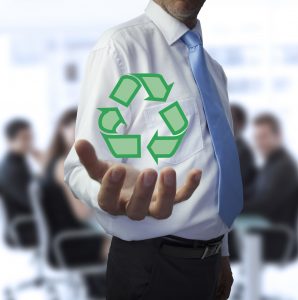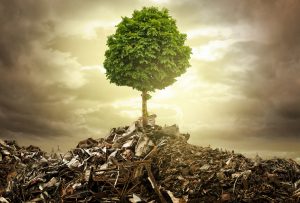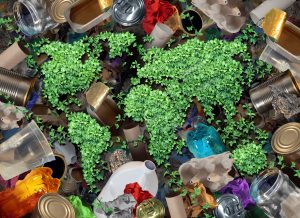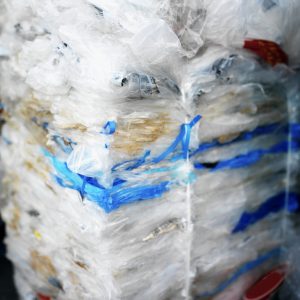by charlotte | Aug 29, 2016
 Are your business practices in need of improvement? You’re not alone either in your need or in seeking out resources and means to streamlining everything from sales models and production to something as easy to overlook as waste management. Six Sigma is a group of tools and techniques designed to optimize your business processes and therefore your products themselves. Often combined with the methodology of lean manufacturing to produce the system known as Lean Six Sigma, this is great knowledge to consider implementing in your venture to tighten up your business model. Lean Six Sigma addresses problems in processes and waste as well as variation and design to form a comprehensive plan for streamlining your business as a whole.
Are your business practices in need of improvement? You’re not alone either in your need or in seeking out resources and means to streamlining everything from sales models and production to something as easy to overlook as waste management. Six Sigma is a group of tools and techniques designed to optimize your business processes and therefore your products themselves. Often combined with the methodology of lean manufacturing to produce the system known as Lean Six Sigma, this is great knowledge to consider implementing in your venture to tighten up your business model. Lean Six Sigma addresses problems in processes and waste as well as variation and design to form a comprehensive plan for streamlining your business as a whole.
What is Lean Six Sigma?
Lean manufacturing addresses business processes and their waste production of all forms through inefficiencies. The goal is to improve overall value, which is measured through the eyes of the customer. Any action or service that a customer would be willing to pay for is considered valuable. Six Sigma is based on a concept in statistical quality control which evaluates process capability. In manufacturing the Six Sigma methodology uses data to determine an appropriate and achievable sigma level for each process, which, when achieved in the short-term production line will decrease defects and therefore waste over time. Lean Six Sigma then utilizes data analytics to reduce waste and variation and therefore increase corporate value.
Why Is Reducing Landfill Waste Important?
Landfill waste is not typically included in the official seven wastes described in the lean manufacturing methodology, but it is not difficult to see how it would interact with them. Oftentimes excess landfill waste is the result of, or results in, other forms of waste such as excess downtime as well as movement. Without a streamlined landfill waste management plan variations in these practices can lead to a high cost of waste removal, and even affect the manufacturing process as employees are inconvenienced by things like waste can placement or problems with them overflowing.
Applying Lean Six Sigma to Waste Management
To start you will need data which means auditing your current waste production to get an idea of how much of what kinds of waste you are sending to the landfill. If you haven’t already designated people to devote themselves to waste management, find employees that are excited about the challenge. Begin finding ways that you can reduce waste streams throughout your operations by implementing recycling and reuse strategies. Investing in a trash compactor will further reduce the size of your waste by a ratio of six to one, which will help to reduce the cost you spend on waste removal. Also, consider your purchasing practices and how you can reduce the packaging on things you are both buying as well as the products you are sending out.
Lean Six Sigma is a great philosophy for improving the value of your company and its products. Waste management always adds value to your company not only through saving you money on logistics and removal costs but also because customers are interested in the corporate responsibility of your business. Being involved in the zero landfill initiative is a great way to devote yourself to improving the way business is done, and Lean Six Sigma is a means to cause that change from within.
For more information about how to improve your waste management practices, call KenBay today!
by charlotte | Aug 22, 2016

There are many forms of waste that arise in complex processes of production. Not only will you send waste to the landfill, but you’ll also find waste in your water and electricity resources, as well as in every phase of the production line and in defective products. These are just a few of the wastes that necessitate the lean manufacturing philosophy that has become the norm throughout the industrial world, in which leaders aim to reduce all streams of waste throughout production.
When we think of waste, we typically think of garbage and yet in lean manufacturing models, actual landfill-bound waste isn’t part of the consideration. Should it be central to the lean manufacturing model? Reducing landfill waste does indeed save a company money in logistics and possibly purchasing, as well as other valuable resources that are being wasted.
What is Lean Manufacturing?
The concept of lean manufacturing is derived from the renowned Toyota Production System which was developed and widely adopted in the 1990s. The Toyota Production System focuses on seven wastes that, when reduced, will improve overall customer value. Since value is measured through the eyes of the customer, any action or service that a customer would be willing to pay for is considered valuable. This lean manufacturing model is what made a small Japanese car company into the world’s largest vehicle manufacturer, and all by focusing on the reduction of waste. In their seven waste streams, however, landfill waste is never mentioned, though in today’s market it is absolutely of value to a customer who wants to buy products from responsible companies.
Why Should Landfill Waste Be Included in Lean Manufacturing?
Landfill waste is an aspect of production where the lean manufacturing mentality can be applied to save money and improve productivity and therefore value. Not only do your customers desire products from companies who care about their impact on the environment, but the amount of landfill waste you produce directly correlates to other forms of waste that you are probably overlooking. When you have excess landfill waste, you will find waste in aspects of production like logistics, space usage, and downtime.
How Waste Can Lead to More Waste
When your landfill waste is piling up at unreasonable levels, it is often a symptom or cause of other forms of waste throughout your production where the principles of lean manufacturing are transformative. Motion is one of the seven wastes that is often associated with the movement of landfill waste throughout a manufacturing facility as waste cans need to be frequently emptied, or are in inconvenient places for certain employees. This movement can then lead to more waiting, which is another of the seven wastes, as employees might get lackadaisical in their movement throughout the facility resulting in lower production times.
Trash compactors are a great tool to help in reducing landfill waste and the other wastes associated with it throughout your facility. Not only do they reduce the size and therefore the frequency of waste removal trips, but they also reduce the movement associated with landfill waste. If you are considering waste management practices and how they coincide with your lean manufacturing model, call KenBay to find out how we can be of service.
by charlotte | Aug 17, 2016

If you are producing multiple tons of waste a week, logistics costs can start to pile up quickly. Landfills are filling up and many of them are even closing, leading to even higher logistics costs associated with waste because companies are left to ship it farther distances. When you are already paying for other streams of shipping throughout your business processes, it makes sense to spend less on your waste than you do, say, on shipping products to your customers. If you have yet to consider how much you are actually paying in logistics costs when it comes to waste management, it’s time to crunch some numbers and get those costs down.
Waste Management
When it comes to lowering company-wide logistics costs, waste management is a great place to start. Many new business owners don’t consider that waste management is a thing to take seriously until they get that first waste removal bill. There are various streams of waste to consider when doing a waste management audit, and not just those associated with trash. You can also consider other areas of sustainability like energy and water use. Are there other valuable resources that are not being monitored and therefore producing waste besides the actual materials you are sending to the landfill?
Reduce, Reuse, Recycle
Corporate responsibility necessitates that you manage your waste wisely by recycling and disposing of things like hazardous waste properly. There are many ways to reduce waste coming from your facility, and they all start with a proper audit of all your processes and the waste they produce. By auditing your waste consistently for a designated period you will discover where there are unnecessary or avoidable waste streams and can figure out where to move from there to reduce them. One waste stream you can almost always reduce is packaging. Consider your purchasing practices and how you might order things in a way that cuts down on packaging waste. Packaging can come in many forms from cardboard to shrink wrap and ends up as both trash and recycling.
Furthermore, there are many things that are determined waste that can be useful as opposed to discarded. Things like manilla envelopes and plastic containers can be easily stored for second use. There are also many options to sell used goods to other companies who can use or recycle them, creating a passive income stream where you would have been dishing out in logistics costs.
Invest in a Commercial Trash Compactor
Are you looking to improve the sustainability of your business, as well as the safety of your workplace? Commercial trash compactors are the absolute best bet for achieving both of these goals. With many different sizes and specialities, there are commercial trash compactors for every purpose waiting to prove their return on investment. Not only can you improve the sustainability of your own company, but a commercial trash compactor will help you reduce the volume of waste that you are sending to your local landfill.
For more information about how the manage your waste in such a way that you will reduce logistics costs throughout your company, call KenBay.
by charlotte | Aug 12, 2016
 If you are trying to reduce your waste, one of the easiest things you can do is find things that are easy to reuse. With a little bit of effort, you can significantly reduce many of your waste streams with simple reuse protocols based around sorting, cleaning and storing. There are many things, like manila envelopes and plastic containers, that are determined waste that can be useful instead of thrown out. By taking the effort to save and reuse whatever you can, you will save the company from having to purchase as many as it would otherwise. There are also many opportunities to sell used goods to other companies who can use or recycle them, creating a passive income for your company.
If you are trying to reduce your waste, one of the easiest things you can do is find things that are easy to reuse. With a little bit of effort, you can significantly reduce many of your waste streams with simple reuse protocols based around sorting, cleaning and storing. There are many things, like manila envelopes and plastic containers, that are determined waste that can be useful instead of thrown out. By taking the effort to save and reuse whatever you can, you will save the company from having to purchase as many as it would otherwise. There are also many opportunities to sell used goods to other companies who can use or recycle them, creating a passive income for your company.
4 Benefits of a Habit of Reuse
- Save Money
When you reuse things throughout your business operations you will undoubtedly save money in many ways. Not only will you spend less on purchasing what you have decided to reuse, but you will also save money on waste removal as you significantly diminish a waste stream. When you open your mind to the idea of reusing things you will undoubtedly begin to think more creatively about the waste you’re creating. If you want to further reduce your waste removal costs, consider purchasing a commercial trash compactor.
- Build Partnerships
Another common oversight is the opportunity to find a partner in your community who would consider something that is your waste to be a valuable resource for them. Turn to your community to find partnerships like this and you just may save money in buying things you could get at discounted prices, on trade, or completely free. Not only will the habit of reuse challenge you to think more creatively about your own waste, but also about that of your partners throughout the community.
- Zero Landfill Initiative
The zero landfill initiative is an ideal that many organizations and governments strive for, and the practice of reuse is central to achieving it. If you haven’t yet considered how you can contribute to this admirable common goal, a waste audit and habit of reuse are great places to start.
- Encourage a Charitable Community
Many things go in the trash that could be incredibly useful to other organizations in your community. Teachers, for instance, are constantly short on supplies they need for the classroom, and some of your garbage could serve as great craft supplies or even paper products they might need for schoolwork. Don’t give in and let things get dumped at the landfill when you could be directly helping your community with what you might now be deeming trash. If you can’t reuse it yourself, chances are someone else can. Furthermore, this kind of outward-facing thoughtfulness is a great way to get your employees more engaged in their work as they aim to make it part of something bigger than themselves or even the organization, but about being a service provided to their local community.
If you haven’t yet made the habit of reuse a norm in your organization, it’s time to start working towards this goal. Begin by educating your employees on some simple changes they can make, then give them the freedom to find their own solutions to reuse in order to reduce waste streams. If you are looking for further waste management help, give KenBay a call to see how we can help you.
by charlotte | Aug 6, 2016
 The waste to energy debate in the United States has been a tense one as environmentalists and politicians weigh many aspects of a solution that hasn’t yet caught on. With municipal landfills getting zoned off in most major cities nationwide, there is certainly a need for new waste management streams, and we have a moral obligation to stop sending it to third world countries whose infrastructures can’t handle it. Though a zero landfill initiative would be a dream come true for the government and environmentalists alike, there isn’t hope of this becoming a reality anytime soon, necessitating accessible alternatives like an investment in more waste to energy plants.
The waste to energy debate in the United States has been a tense one as environmentalists and politicians weigh many aspects of a solution that hasn’t yet caught on. With municipal landfills getting zoned off in most major cities nationwide, there is certainly a need for new waste management streams, and we have a moral obligation to stop sending it to third world countries whose infrastructures can’t handle it. Though a zero landfill initiative would be a dream come true for the government and environmentalists alike, there isn’t hope of this becoming a reality anytime soon, necessitating accessible alternatives like an investment in more waste to energy plants.
What is the Waste to Energy Debate?
Waste to Energy, or WtE, is a means of disposing of waste, usually by incineration, to produce electricity and heat, and even biofuels. There are less than 100 WtE plants in the United States, while in Europe it has become much more popular and is accepted there as a form of renewable energy. American environmentalists would argue that it can’t be renewable if it depends on human waste. Many WtE plants can sell energy or heat directly to the grid, while the combustible fuel producers create methane, methanol, ethanol or synthetic fuels that can be used for transportation as well as in industry. Aside from the debate as to whether waste to energy is actually a renewable energy stream, many people use the Not-in-my-Backyard (NIMBY) argument against building more WtE plants because they are worried about smells, smoke, and other pollutants. These concerns have been largely disproven through research, however.
The Cost of Transportation
There is the question of the cost associated with shipping waste to WtE plants and whether it’s worth the transportation costs. The fact is that many municipalities are already increasing their waste transportation costs because of full landfills, and are sending their garbage not only to other states but to other countries. The rising costs of shipping waste are significant and becoming the norm in more densely population centers around the country.
Is it Worth Shipping to a Waste to Energy Plant?
It may seem an unnecessary cost to ship to a WtE plant right now, but the more mainstream this solution becomes, the more plants will be built. By fronting the cost now, you are investing in the future of waste management in this country. The hope is that someday you will have a municipal waste to energy plant that won’t require excessive shipping costs. There are numerous ways to reduce the amount of waste you are producing, as well as the option of investing in a commercial trash compactor. Both scenarios will help offset some of the costs of shipping your waste to a WtE.
If you are considering whether to do more with your waste then send it to your local landfill, the waste to energy solution is a great opportunity for you. If you want to speak with waste management experts to discuss your options, give KenBay a call!
by charlotte | Jul 30, 2016
 Taking care of your trash and recycling is not only a big job when running a business, but can also be a costly one. There are countless ways to reduce the costs associated with the trash and recycling handling, while simultaneously building a more sustainable business. Whether your main waste streams are in packaging or food waste there are simple ways to alleviate your removal costs.
Taking care of your trash and recycling is not only a big job when running a business, but can also be a costly one. There are countless ways to reduce the costs associated with the trash and recycling handling, while simultaneously building a more sustainable business. Whether your main waste streams are in packaging or food waste there are simple ways to alleviate your removal costs.
5 Ways to Reduce Carrying Costs of Trash and Recycling
- Educate Your Employees
The process of reducing the costs surrounding your waste management and trash and recycling hauling specifically begins with education or re-education. Once you have been caught up on all the latest policies, technologies and methodologies, begin to make a plan and spread the information throughout your company. Host informational meetings and find the people in your employ who are passionate about the cause. Use signs to help people remember what they’ve learned about your new waste management direction.
- Reduce Waste
There are many ways to reduce waste coming from your facility, and they all start with a proper audit of all your processes and the waste they produce. By auditing your waste consistently for a designated period you will discover where there are unnecessary or avoidable waste streams and know where to move from there in your goals to make less waste.
- Reduce Packaged Inventory
One waste stream you can almost always reduce no matter your industry is in packaging. Consider your purchasing practices and how you might cut down on the amount of packaging waste you produce. Packaging can come in many forms from cardboard to shrink wrap and ends up as both trash and recycling.
- Reuse Whatever You Can
There are many things that are determined waste that can be useful as opposed to discarded. Things like manilla envelopes and plastic containers can be easily stored for second use. There are also many options to sell used goods to other companies who can use or recycle them, creating yet another passive income for your company.
- Invest in a Commercial Trash Compactor
Are you looking to improve the sustainability of your business, as well as the safety of your workplace? Commercial trash compactors are the absolute best bet for achieving both of these goals for your company, as well as many more when you choose the one that is most suitable for you. With many different sizes and specialities, there are commercial trash compactors for every purpose waiting to prove their worth in investment. Not only can you improve the sustainability of your own company, but a commercial trash compactor will help you reduce the volume of waste that you are sending to your local landfill.
When companies put time, energy and money into considering how they can implement better practices for their trash and recycling handling, they are not only improving their business operations but are giving back to their community and oftentimes they’ll save money doing it. While the immediate costs and initial investments might not seem worth it, the long-term savings and improved public relations are undeniable.
If you are looking for a waste management consultant, be sure to call KenBay to learn more about our expertise.
by charlotte | Jul 22, 2016
 Shrink wrap is a prevalent material used across many industries. You’ll find in your grocery stores, and wrapping entire pallets full of shipments. Unfortunately, most of this stretchy, filmy, sticky plastic that can be somewhat of a nuisance ends up going straight into the trash – 95% of it to be precise. That’s a lot of plastic going to our landfills, and in certain industries it gets to be a voluminous waste stream accounting for tens of cubic yards a week, meaning multiple dumpsters full of the stuff. Without making a concerted effort to separate shrink wrap out from the rest of your waste, it’s a loss as opposed to something that could be an added revenue stream for your business.
Shrink wrap is a prevalent material used across many industries. You’ll find in your grocery stores, and wrapping entire pallets full of shipments. Unfortunately, most of this stretchy, filmy, sticky plastic that can be somewhat of a nuisance ends up going straight into the trash – 95% of it to be precise. That’s a lot of plastic going to our landfills, and in certain industries it gets to be a voluminous waste stream accounting for tens of cubic yards a week, meaning multiple dumpsters full of the stuff. Without making a concerted effort to separate shrink wrap out from the rest of your waste, it’s a loss as opposed to something that could be an added revenue stream for your business.
3 Things About Shrink Wrap
- It’s Recyclable
It doesn’t occur to many people that shrink wrap is actually recyclable since it doesn’t have the token recycle tag on it that has trained us to know what goes in the blue bin. The fact is that there are many businesses that will gladly buy your shrink wrap and recycle it. Any amount of shrink wrap is worth recycling if just to make more space in your waste cans, and reduce your hauling costs even by a little. If you want to learn more about how you might actually save money by recycling your shrink wrap here are some measurements that will make it easier:1 gaylord = 40 cubic feet = 1.5 cubic yards
40 gaylords = 1600 cubic feet = 60 cubic yards
60 cubic yards = 6 ten-yard dumpsters
Perform an audit to figure out what your weekly totals of shrink wrap waste are and then subtract that from your hauling bill and you will determine how much you could be saving by recycling it as opposed to sending to the landfill.
- Keep it Clean and Separate
In order to recycle shrink wrap, you need to keep it separate from the rest of your waste. Since most shrink wrap waste is created in unpacking, be sure that those employees have separate bins for it. Most recycling firms want shrink wrap to be both clean and have all the labels removed in order for them to buy it back from you. Once removed from packaging the shrink wrap should be immediately placed in a waste bin to reduce the chance of its picking up dust, which will happen quickly as it is a sticky plastic.
- You Don’t Need a New Baler for Shrink Wrap
If you already use a baler for something like cardboard and have enough shrink wrap waste to bale, the good news is that you don’t need to buy a new baler to start recycling this as well. If you generate between 2,000 and 4,000 pounds per month a 42-yard compactor will do the job you need to be done. It will take about 20 gaylords of shrink wrap to fill it up the compactor to make one bale.
If you are creating tons of shrink wrap waste a month it is definitely worth contacting a company like KenBay to learn more about what kind of baler you need to start recycling your shrink wrap. We can also help you get connected with the right people who will gladly recycle this waste product for you.
by charlotte | Jul 15, 2016
 Using recyclable materials is about much more than reducing your waste removal costs, though that is a nice bonus. Recyclable materials promise a brighter future for our planet and the human race by reducing our use of finite resources. When companies put time, energy and money into considering how they can implement recyclable materials into their products and packaging, they are giving back to their community, and oftentimes they’ll save money doing it. While the immediate costs and initial investments might not seem worth it, the long term savings are undeniable.
Using recyclable materials is about much more than reducing your waste removal costs, though that is a nice bonus. Recyclable materials promise a brighter future for our planet and the human race by reducing our use of finite resources. When companies put time, energy and money into considering how they can implement recyclable materials into their products and packaging, they are giving back to their community, and oftentimes they’ll save money doing it. While the immediate costs and initial investments might not seem worth it, the long term savings are undeniable.
Reduce Your Spending on Recyclable Materials
- Automated Waste Reporting
End of Life regulations are only getting more strict as the government attempts to reduce the amount of waste being produced by industry. This is a trend that is being quickly adopted in the United States after many years of success in the European Union. These new regulations are encouraging companies to consider the entire lifespan of their products from their design and creation all the way through the end of their life and where they will end up when discarded. With the task of calculating recycling fees based on sales, shares, materials, weights and so forth, companies have turned to technology to help them keep track of their waste management expenses, often finding up to fifty percent savings with this approach.
- Smart Design
A large part of reducing waste management costs, especially on recyclable materials, is smart design. Maybe your company’s brand is entirely wrapped up in its packaging and the thought of changing it is overwhelming. There are many subtle things you can change in product design by using new technologies in recyclable materials that will save your fees in the long run. On the other hand, loyal customers are typically happy if you change your packaging for a good cause, because then they get to feel they are part of it.
- Incentivize Recycling
Many companies aren’t as concerned with their packaging as they are with their products themselves. In a world ruled by screens, electronics manufacturers bear a heavy burden when it comes to recyclable materials and keeping their dead products out of landfills. Companies like Apple offer end of life trade-in programs, and will even give you a small gift card for those ancient macbooks sitting around collecting dust. These programs allow them to save on fees as well as recycle old parts themselves. Customers get to feel better about where their garbage is going than simply throwing it the waste bin.
Don’t overlook the importance of implementing recyclable materials into your products and packaging. With a fresh look at your waste management practices you will find many opportunities to save money, while you might pay a little more to get the ball rolling. There are countless resources for this step towards corporate social responsibility that will not only improve the face of your brand, but will help your employees to feel part of something bigger. For more information for waste management experts on how to make a shift to a more sustainable business, give KenBay a call.
by charlotte | Jun 27, 2016
 Balers aren’t just farm tools used for hay, but they are used throughout other industries for things like paper, cardboard, plastic and even textiles. They are one of the most common backroom tools in a retail setting, and keep stock rooms free from the clutter of empty boxes, while helping clothing donation centers efficiently store and ship clothes. If you are looking for a way to better manage waste in your facility, be it boxes or otherwise, balers come in a number of sizes with various purposes and are an affordable solution to help you get more organized and lower your waste removal costs.
Balers aren’t just farm tools used for hay, but they are used throughout other industries for things like paper, cardboard, plastic and even textiles. They are one of the most common backroom tools in a retail setting, and keep stock rooms free from the clutter of empty boxes, while helping clothing donation centers efficiently store and ship clothes. If you are looking for a way to better manage waste in your facility, be it boxes or otherwise, balers come in a number of sizes with various purposes and are an affordable solution to help you get more organized and lower your waste removal costs.
Balers aren’t Too Big for Your Backroom
Many people avoid investing in equipment like balers because they assume they will take up far too much room. While some balers can be as large as 12 square feet at their base, there are many smaller models that you will easily be able to make room for, especially considering the fact that they will reduce the size of your waste at a ratio of six to one. Balers aren’t space consuming, they are space creating. Don’t fall for this common misconception and be held back from an investment that will end up showing returns in what can happen in just a matter of months.
Balers for Everything
Whether you’re in a retail store with thousands of boxes that pile up each week, or a food and beverage setting with plastic recyclables or food waste that needs compacting, balers are the perfect solution. A self-contained compactor is perfect for any setting in which wet waste is unavoidable and a plastic bag is available instead of using wire for tying bales. Leakage will always be controlled, and you can even buy biodegradable bags to contribute to your zero landfill initiative should that be your goal. Even if you have waste that is large and awkwardly sized like furniture, you will be able to find balers strong enough for the job. Don’t let your waste cans overflow with unruly items piling them up far sooner than they ought. Make use of balers to do this awkward, time-consuming and often messy waste management job.
Save Money with Balers
Compacting and baling your waste is one of the easiest ways to save money on your waste management costs. More compact waste means you can have it removed from your premises less frequently, saving you money on transportation. Furthermore if you’re recycling a significant amount of plastic, metals or paper and cardboard, you can actually make money selling sorted bales back to the recycling company. This can end up being quite a lucrative stream of income for your business if you’re producing enough waste.
Investing in equipment like balers is one of the best steps to take in rethinking your waste management practices. Ideally you will take time to consider each step in your process to see how you can minimize waste and maximize efficiency, and maybe even partner with a waste management expert to see you through the process and recommend the best equipment for the task. Call KenBay to learn more about how we can help take this step in improving your business!
by charlotte | Jun 24, 2016
 Are you looking to improve the sustainability of your business, as well as the safety of your workplace? Commercial trash compactors are the absolute best bet for achieving both of these goals for your company, as well as many more when you choose the one that is most suitable for you. With many different sizes, and specialities, there are commercial trash compactors for every purpose waiting to prove their worth in investment. Not only can you improve the sustainability of your own company, but a commercial trash compactor will help you reduce the volume of waste that you are sending to your local landfill.
Are you looking to improve the sustainability of your business, as well as the safety of your workplace? Commercial trash compactors are the absolute best bet for achieving both of these goals for your company, as well as many more when you choose the one that is most suitable for you. With many different sizes, and specialities, there are commercial trash compactors for every purpose waiting to prove their worth in investment. Not only can you improve the sustainability of your own company, but a commercial trash compactor will help you reduce the volume of waste that you are sending to your local landfill.
Features to Look for in a Commercial Trash Compactor
High Speed of Compaction
Improving your company’s productivity should be one of your main goals when investing in a commercial trash compactor. Making sure that the speed of compaction can keep up with your production is of the utmost importance. With rates reaching 300 pounds per hour, the KenBay commercial trash compactors are quite speedy and in no danger of holding up your production. You will no longer have to demand that your skilled employees waste so much time on things like waste management.
High Compaction Rate
While commercial trash compactors do indeed take up space in any facility, they should ultimately save you space by reducing the volume of your waste. Whether the space saving happens in your waste removal receptacle or whether it’s the piles of cardboard boxes that accumulate in a corner somewhere before anyone has a chance to break them down, they are sure to be space saving. When you greatly reduce the volume of your waste, say, at a rate of six to one like the KenBay compactors promise, you can also reduce the cost of your removal. If you are saving space inside your facility by being able to compact paper products, you will undoubtedly make room for more equipment to increase your productivity without raising your overhead costs.
Small Footprint Commercial Trash Compactor
Most people imagine commercial trash compactors to be extremely large, when in reality most of them take up no more space than the square footage of your average shipping pallet. Able to fit into any corner of your facility with very little bother, you can also place them throughout an assembly line, reducing the time spent moving waste around your facility, while greatly reducing the chance for hazards in the form of unruly trash cans. You can find commercial trash compactors for every purpose in this same manageable size, which individually take up less than twelve square feet on your floor, whether it’s in an assembly line setting, or a back stock room.
These are just a few things to consider when doing research about investing in a commercial trash compactor. If you are seriously considering making this change then talking to a waste management company is very much worthwhile. A company like KenBay will help you take stock of your waste practices, further increasing your productivity and decreasing your waste with more than just the purchase of a trash compactor. If this interests you be sure to give KenBay a call to learn more.
 Are your business practices in need of improvement? You’re not alone either in your need or in seeking out resources and means to streamlining everything from sales models and production to something as easy to overlook as waste management. Six Sigma is a group of tools and techniques designed to optimize your business processes and therefore your products themselves. Often combined with the methodology of lean manufacturing to produce the system known as Lean Six Sigma, this is great knowledge to consider implementing in your venture to tighten up your business model. Lean Six Sigma addresses problems in processes and waste as well as variation and design to form a comprehensive plan for streamlining your business as a whole.
Are your business practices in need of improvement? You’re not alone either in your need or in seeking out resources and means to streamlining everything from sales models and production to something as easy to overlook as waste management. Six Sigma is a group of tools and techniques designed to optimize your business processes and therefore your products themselves. Often combined with the methodology of lean manufacturing to produce the system known as Lean Six Sigma, this is great knowledge to consider implementing in your venture to tighten up your business model. Lean Six Sigma addresses problems in processes and waste as well as variation and design to form a comprehensive plan for streamlining your business as a whole. 



 If you are trying to reduce your waste, one of the easiest things you can do is find things that are easy to
If you are trying to reduce your waste, one of the easiest things you can do is find things that are easy to  The
The  Taking care of your trash and recycling is not only a big job when running a business, but can also be a costly one. There are countless ways to reduce the costs associated with the trash and recycling handling, while simultaneously building a more sustainable business. Whether your main waste streams are in packaging or food waste there are simple ways to alleviate your removal costs.
Taking care of your trash and recycling is not only a big job when running a business, but can also be a costly one. There are countless ways to reduce the costs associated with the trash and recycling handling, while simultaneously building a more sustainable business. Whether your main waste streams are in packaging or food waste there are simple ways to alleviate your removal costs.  Shrink wrap is a prevalent material used across many industries. You’ll find in your grocery stores, and wrapping entire pallets full of shipments. Unfortunately, most of this stretchy, filmy, sticky plastic that can be somewhat of a nuisance ends up going straight into the trash – 95% of it to be precise. That’s a lot of plastic going to our landfills, and in certain industries it gets to be a voluminous waste stream accounting for tens of cubic yards a week, meaning multiple dumpsters full of the stuff. Without making a concerted effort to separate
Shrink wrap is a prevalent material used across many industries. You’ll find in your grocery stores, and wrapping entire pallets full of shipments. Unfortunately, most of this stretchy, filmy, sticky plastic that can be somewhat of a nuisance ends up going straight into the trash – 95% of it to be precise. That’s a lot of plastic going to our landfills, and in certain industries it gets to be a voluminous waste stream accounting for tens of cubic yards a week, meaning multiple dumpsters full of the stuff. Without making a concerted effort to separate  Using
Using  Balers
Balers Are you looking to improve the sustainability of your business, as well as the safety of your workplace?
Are you looking to improve the sustainability of your business, as well as the safety of your workplace? 